Your Complete Guide to Hunting Lionfish
Lionfish. You’ve heard of them. You’ve seen them. But how do you catch them? After all, the invasive species doesn’t exactly get hooked on your rod and reel. Believe it or not, hunting lionfish is easier than you think!
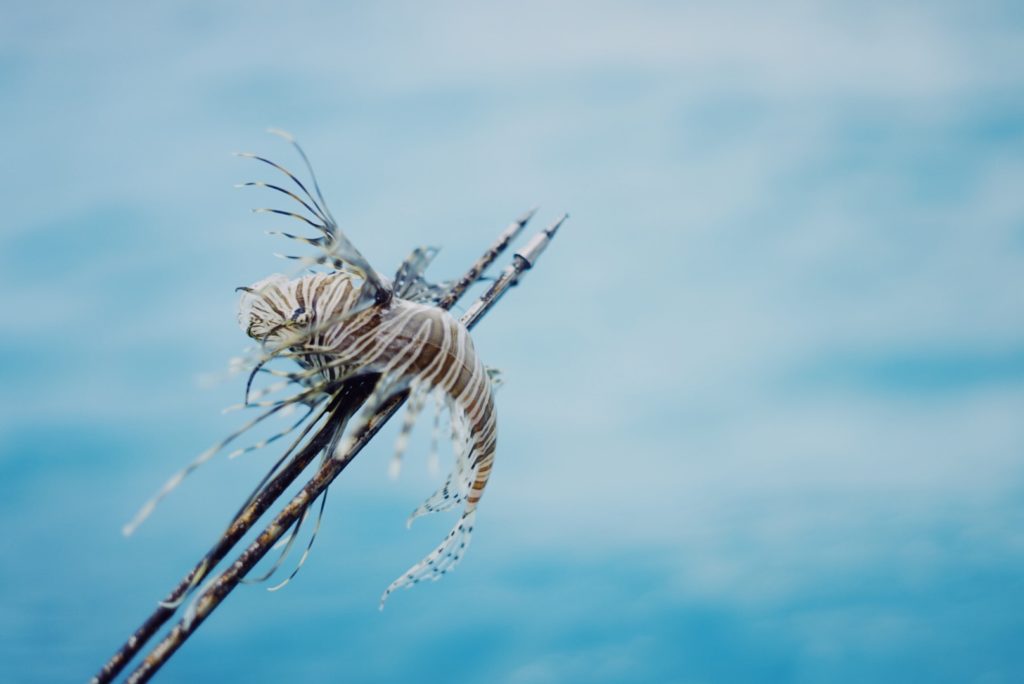
But first, why should we hunt lionfish?
Lionfish are an invasive species in the Gulf of Mexico, Caribbean Sea, and Atlantic Ocean. Originally from the Indo-Pacific, these fish are having a devastating impact on coral reefs, native fish populations, and overall ocean health. To put it mildly, our local ocean environments are dependent on lionfish being removed.
Ironically, lionfish eat everything while being eaten by NOTHING. In other words, they have no natural predators! But yet, the invasive species needs to be removed to conserve the health of our oceans. What can be done?
The answer: You can become the predator!
Becoming the predator: everything you need to know when hunting lionfish
That might sound intimidating, right? I mean, it’s not every day someone tells you to become a predator. But have no fear! Hunting and catching lionfish is easier than you think! And fun too!
A few different methods to catch lionfish exist: a net, a trap, or a spear. I’m here to tell you the easiest, safest, most fun, and effective method is using a pole spear while SCUBA diving!
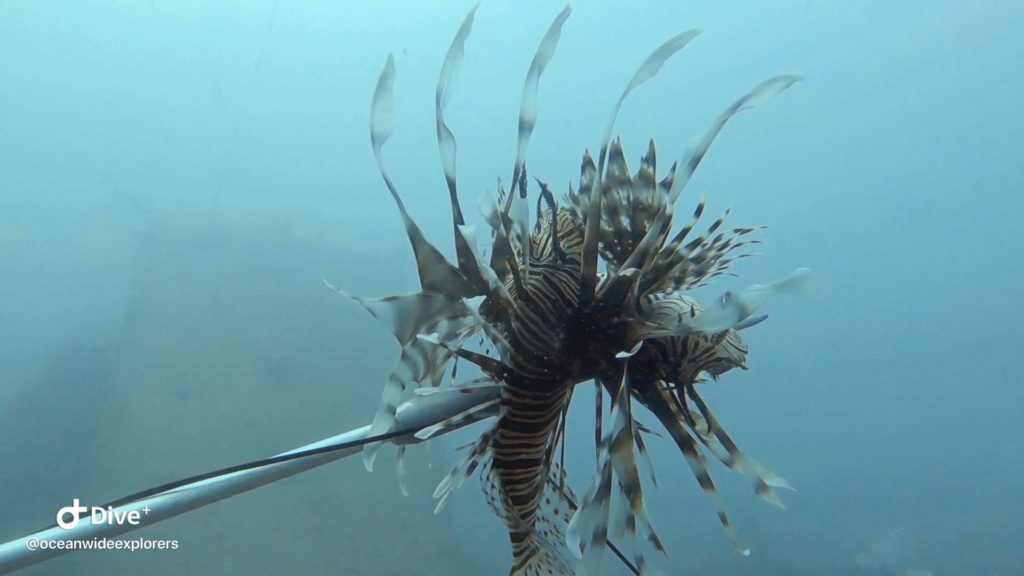
What is a pole spear?
A pole spear is an underwater tool used in spearfishing. It consists of three parts: the shaft (typically fiberglass or metal), the spear tip (usually three or four prongs), and a rubber loop.
How does a pole spear work?
The rubber loop is rung around your thumb and the spear is pulled back to grip just above the spear tip. This creates tension in the rubber loop so when you release the spear, it flings forward to pierce your prey.
Ready, set, aim, fire!
Why is a pole spear used for lionfish?
Lionfish have no natural predators, remember? They’re simply not accustomed to fleeing from anything, so why would they flee from you?
This lack of instinct in the lionfish allows you to get close enough without it fleeing from the scene. When executed properly, the process will be quick, clean, and humane!
In addition, the pole spear allows you to keep a safe distance from the lionfish. Keep in mind, the spines are venomous!
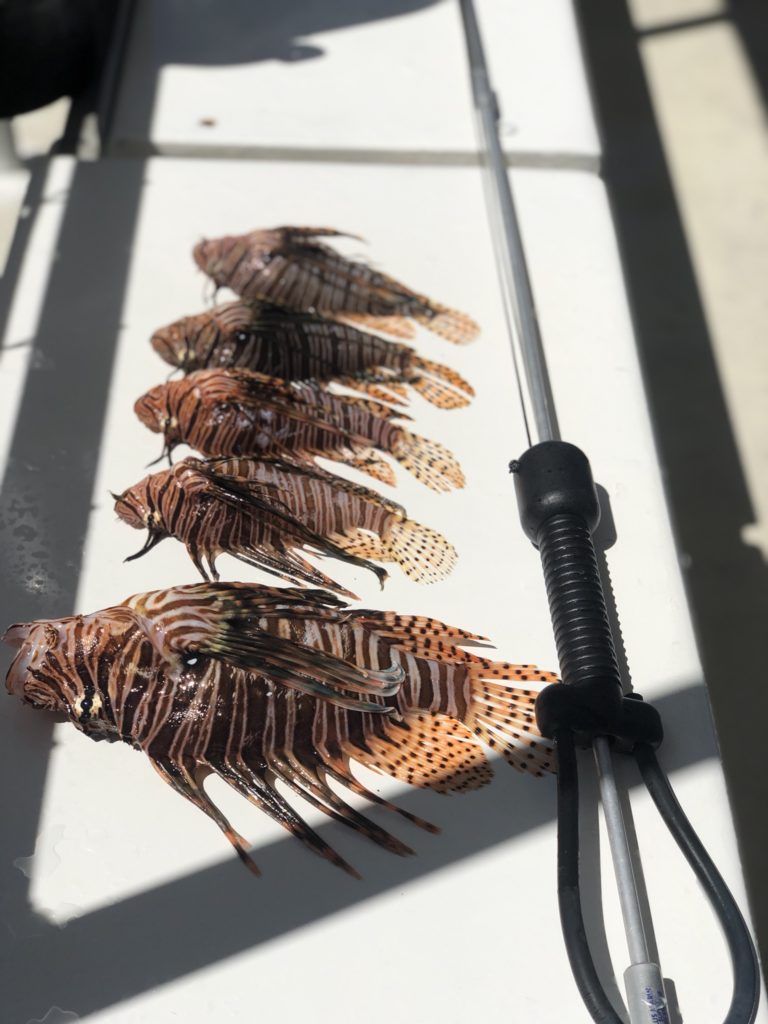
How long should your pole spear be?
Pole spears vary in length, typically from 3 feet all the way up to 6 feet. The longer the spear, the more range you’ll have when hunting underwater.
Specifically, lionfish do not require a long spear as you can get pretty close without spooking them. We recommend a 3 or 3.5 feet spear as a starter. They’re cheaper and just as effective as their longer counterparts. But ultimately, use what feels comfortable to you!
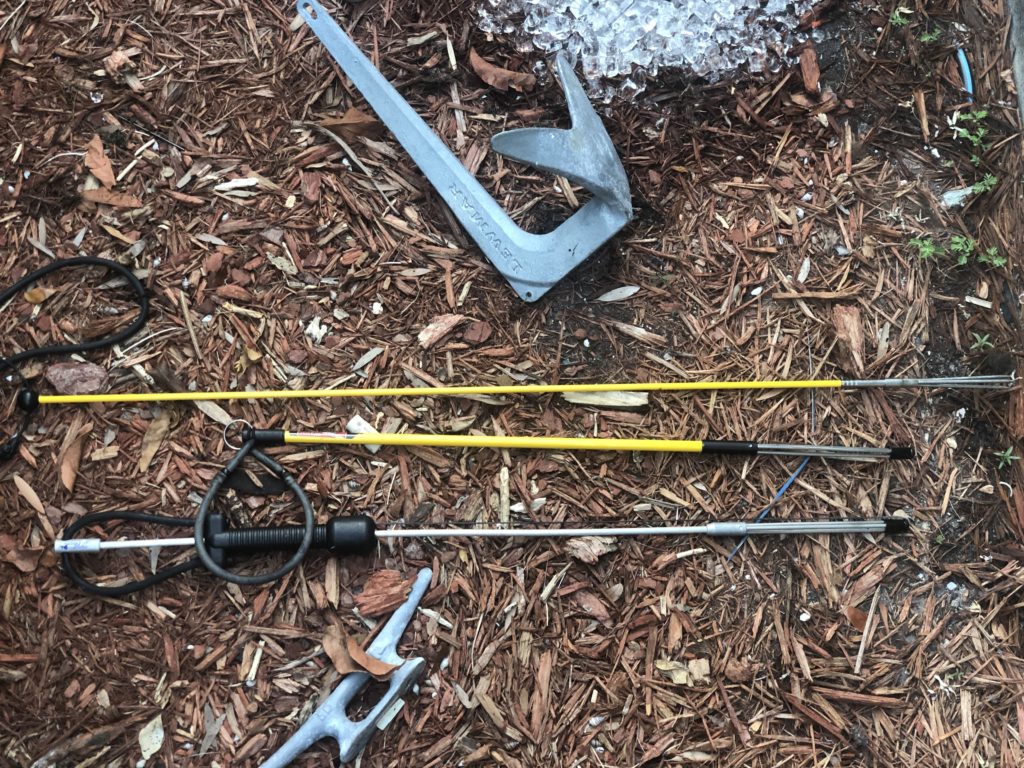
Where can you get a pole spear?
Visit your local dive shop as they’ll usually have a small selection. To see more, browse the web for a greater selection of spears! Honestly, just keep it cheap. For lionfish, they all work about the same. Here are a few we can recommend:
READ MORE: Lionfish Hunting Gear: Selecting a Pole Spear
Hunting lionfish: what to do underwater
You have your gear. You have your spear. And you’ve planned your dive. What now? Follow these tips for a successful hunt!
What time of day is best to hunt for lionfish?
The optimal time to hunt for lionfish is dawn and dusk. Why? That’s when they hunt!
During the day, lionfish typically hide in cracks, crevices, and under ledges. Not good for you when you’re trying to find the little guys!
However, they’re certainly not impossible to find during the day, but you’ll have more success when the sun rises or sets.
READ MORE: 11 Tips to Catch More Lionfish While Scuba Diving
How do you find lionfish underwater?
Step 1: Find a good habitat. What’s a good habitat, you ask? Coral reefs, ledges, ship wrecks, and slightly deeper water (typically, the bigger fish live deeper)
Step 2: Scan the area as you swim along looking for the distinctive white tips of the fins, spines, and tail. Truly, it’s a dead giveaway.
Step 3: Look under, over, in, and around reef and other structures. They’ll even be hanging out upside down!
READ MORE: Lionfish Hunting: 7 Tips to Find Your Prey
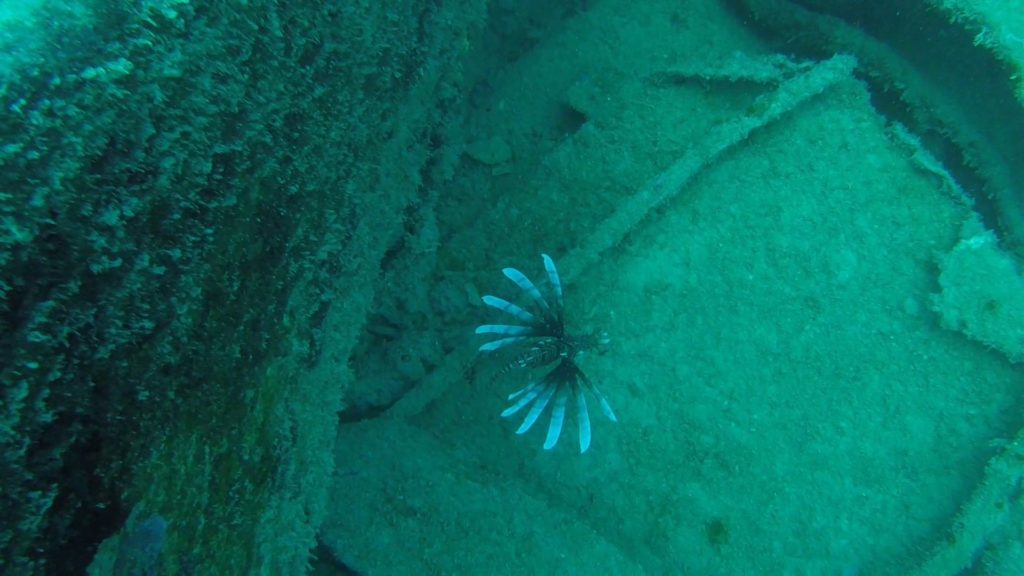
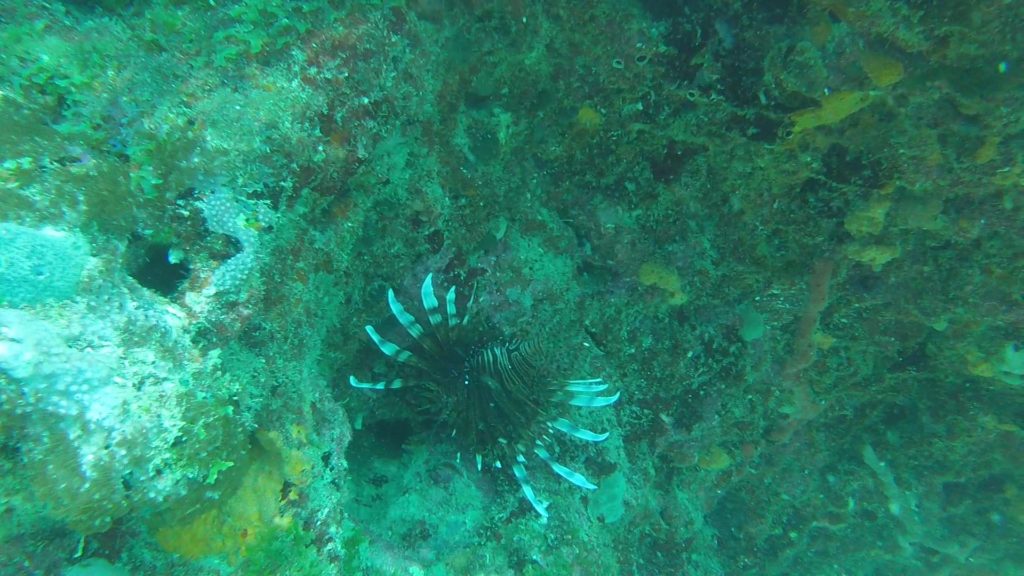
How do you approach lionfish?
You’ve done it. You spotted one. What’s your next move?
First, scan the area. Is it safe? Lionfish tend to hang out in groups: are more in the area? Will any coral or animals be damaged by your presence?
You’ve answered these questions and you’re good to go. Although this isn’t always possible, approach the lionfish from behind to prevent spooking it. Slow and in control is your best bet.
Cock your spear as you approach and get ready to aim.
Where should you aim when hunting for lionfish?
Lionfish have a thick, bony skull so aiming for the head isn’t ideal. For best results, aim slightly behind the head while you approach from its side. This gives your spear more surface area to pierce and better ensures a clean and humane removal.
The lionfish may move, don’t panic! Closely follow and wait for the fish to stop before making your shot. Get as close as possible without spooking the fish! Again, slow and in control.
READ MORE: Spearfishing Lionfish: How to Shoot Your Prey
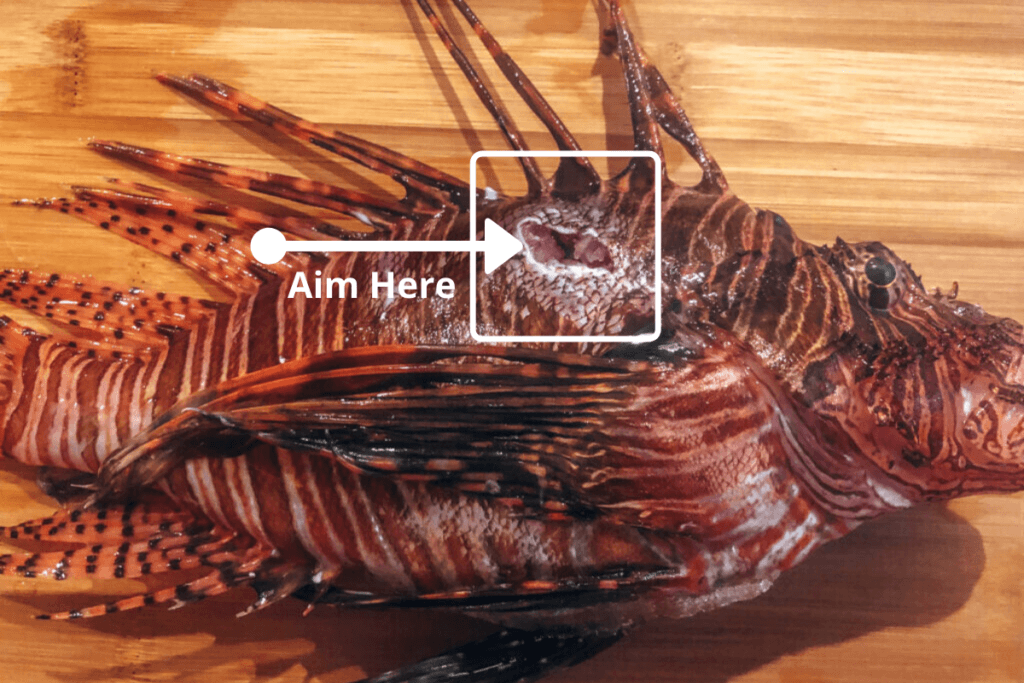
You speared a lionfish! Now what?
He’s at the end of your spear and the thing is wiggling like crazy! Ut oh! If possible, jam your spear into the sand to push the fish farther onto your prongs. You got him now!
Well, now what? You can’t exactly carry him on your spear for the rest of your dive. Especially if you want to spear more! Introduce: a lionfish containment system!
Lionfish containers are typically made for easy and safe use: you shove the lionfish in, it comes off your spear, and you continue your dive while being safe from any accidental pokes.
A few containment systems exist on the market but the best one, by far, is the ZooKeeper. This thing works like a charm! However, it’s insanely expansive for what it is. If you have the cash, we do highly recommend it.
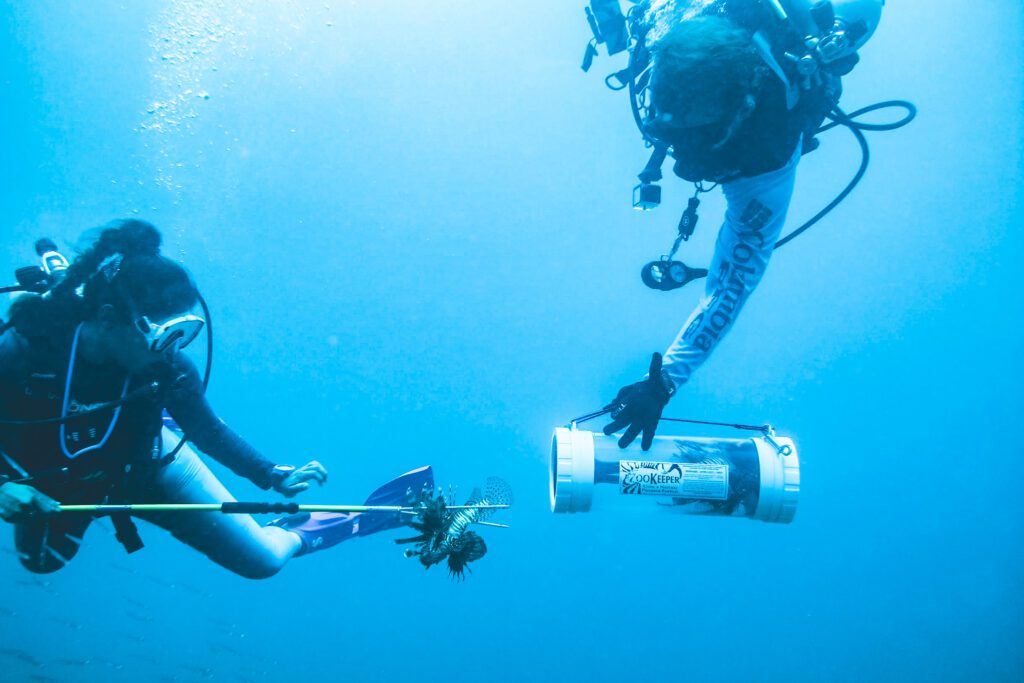
However, if you want a more cost effective option try one of these (the second is mesh, it works but be aware of spines sticking out!):
READ MORE: Lionfish Hunting Gear: Best Containment Units
NOTE: We made a DIY lionfish container! It’s cost effective, environmentally friendly (using recycled material), and easy to make! Stay tuned for the video on how to make it! In the mean time, contact us if you want the instructions!
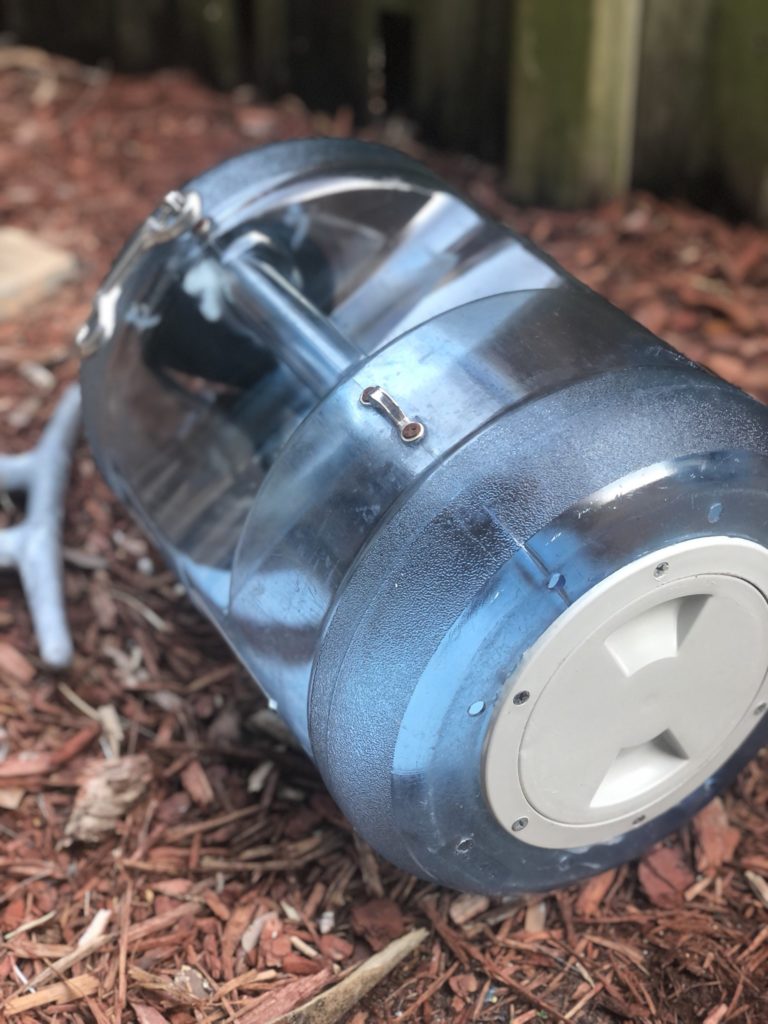
Safety Precautions
As with anything underwater, some inherent dangers do exist. Lionfish are venomous. That means if you are poked by one of their 18 venomous spines, it’s going to hurt.
Take the correct precautions underwater by wearing gloves, being safe with a spear, containing the lionfish, and avoiding contact with fish and coral. Essentially, check your surroundings and be mindful of your body.
What if you do get poked?
Always keep a thermos full of hot water on the boat. Soak the wound the best you can without burning yourself. The hot water will break down the enzymes in the venom making the whole experience far less painful.
Equipment Round Up: the essential gear you’ll need to hunt lionfish
Time for your final check. Do you have every piece of equipment for a successful hunt? Let’s find out:
| Equipment Type | ? |
| Essential Scuba Gear | ✓ |
| Lionfish Containment System | ✓ |
| Pole Spear | ✓ |
| Gloves | ✓ |
| Thermos of Hot Water | ✓ |
| Cooler for Catch | ✓ |
Looks like you’re ready! Go save the environment! Have fun and be safe!

Can you eat lionfish?
The inevitable question: are lionfish safe to eat? Of course they are! They’re actually delicious! Stay tuned for a post on recipes, filleting, and eating lionfish!

Other Considerations When Hunting Lionfish:
Hunting lionfish is fun, easy, and great for the environment. Now that you know how, be sure to consider all the factors:
- Lionfish are open season. Meaning there is no limit on amount, size, or time of year.
- However, certain areas may be restricted. For example, some State Parks (i.e. John Pennekamp State Park in Key Largo) prohibit the use of spears and spearfishing.
- Marine Protected Areas (MPAs) prohibit hunting lionfish without a special permit.
- Once you have a lionfish in your possession, it is illegal to release it. You are releasing an invasive species to the environment!
- Lionfish accidentally getting off a spear is one thing, letting it go is another.
- Eat your lionfish! They’re delicoius and easy to cook! Part of being a conservationist is using every bit of the fish. Eat them to save the environment!
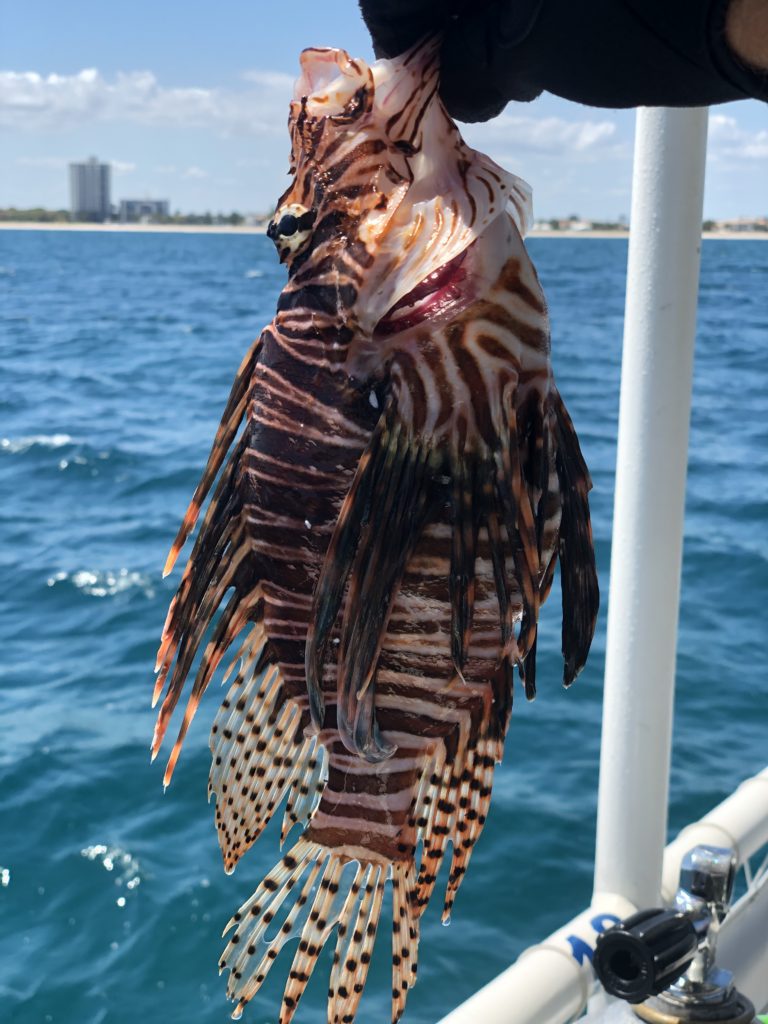
Enjoy this Post? Pin it!
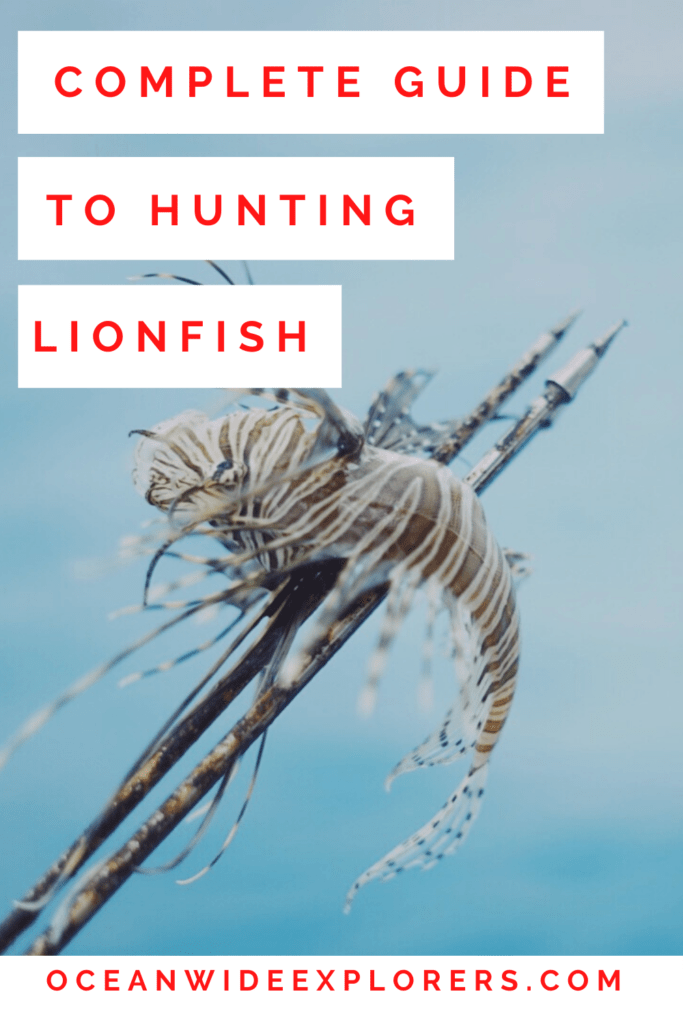
Read More About Hunting Lionfish
We hope you enjoyed our post on hunting lionfish. Hopefully you’ll find it useful on your next adventure! Here are a few more ocean-loving articles we think you should read next:
- 18 Facts You Should Know About Lionfish
- 11 Tips to Catch More Lionfish
- The Gear You Need to Hunt Lionfish
- What Gear Do You Need to Scuba Diving?
How do you hunt lionfish? Let us know your lionfish hunting stories below! Leave a comment!

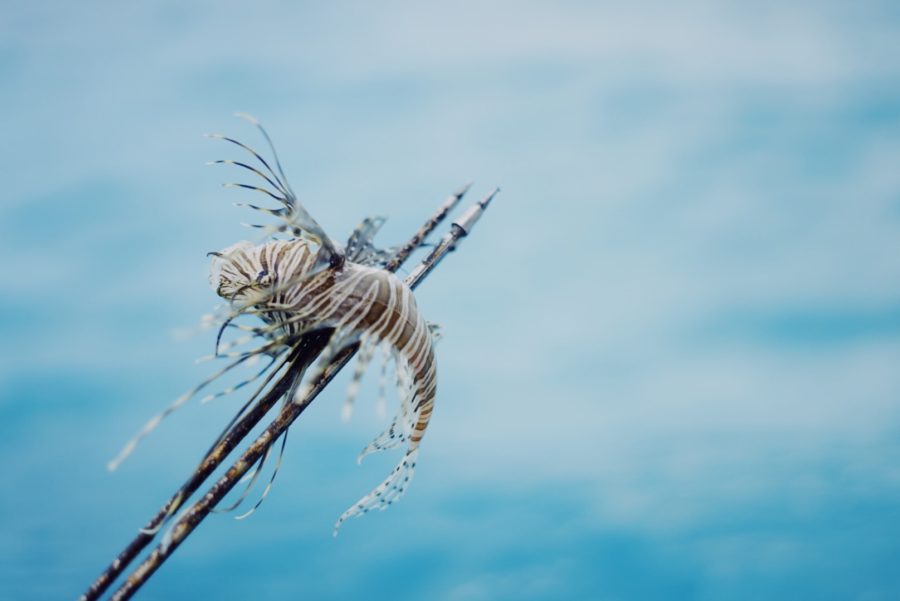



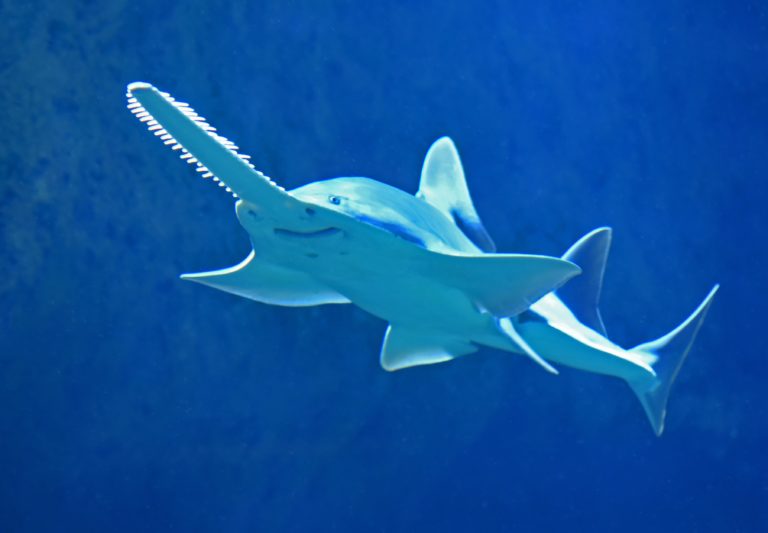


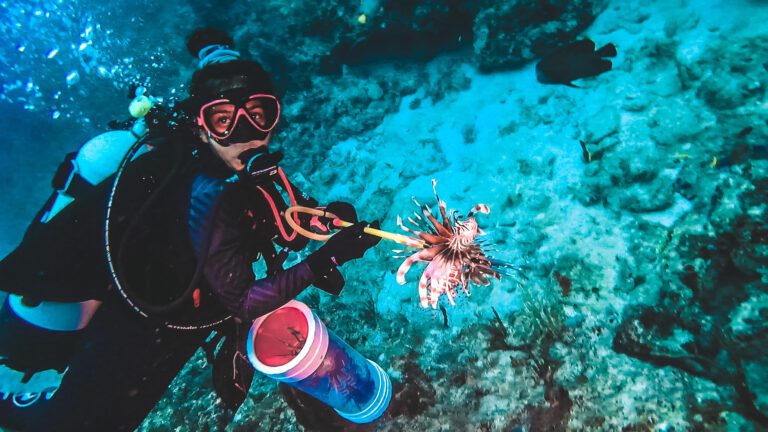
An interesting topic and I’m glad to come across your page where I found some helpful insights. Check out my website Article World too, if you need additional resources about SEO.